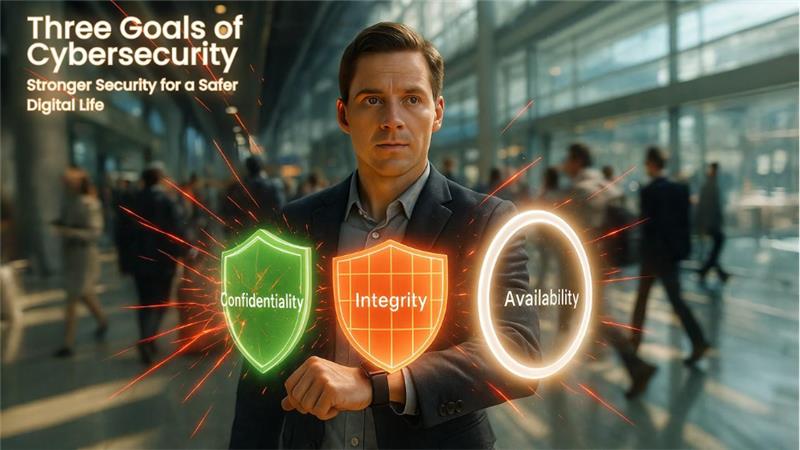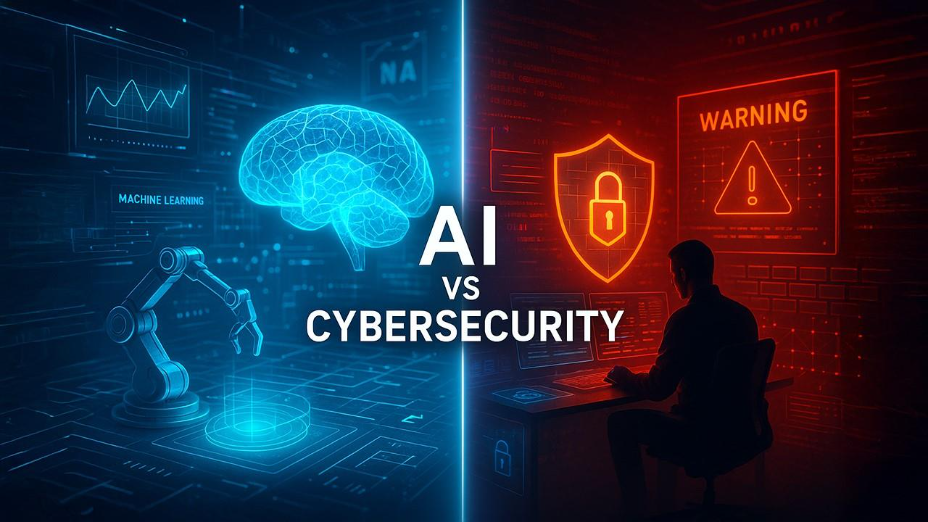As we shift to a digital environment, the number of cybercrimes is increasing rapidly, which exposes individuals, organizations, society or even nations to risks and cyber-attacks. Cybercrime should be countered with effective cyber security systems. Cyber security should be a top priority to counter digital attacks, data breaches, data theft, and unauthorized access. Hence, the primary three goals of cyber security should be understood in order to effectively practice and implement security protocols. The three goals of cyber security, commonly known as the CIA triad, are confidentiality, integrity, and availability.
This article explains thoroughly and addresses the questions of three goals of cyber security in every aspect with the tools to accomplish it.
CIA Triad: Three Pillars of Cybersecurity
The CIA triad consists of confidentiality, integrity, and availability. It is a model that aims to support policies for information security in an organization. People, Processes, and Technology all work together to support these objectives of cyber security and form appropriate security systems. Let's discuss the three goals of cybersecurity in detail:
Confidentiality: Safeguarding Sensitive Information
Confidentiality is the primary goal of cybersecurity. It seeks to ensure that only authorized individuals have access to sensitive information and prevent unauthorized access. Confidentiality is very important in maintaining privacy and safeguarding sensitive data, such as personal information, trade secrets, and financial information.
Example:
When you access your email, ideally, only you (or someone with your password) will be able to access your emails. If a hacker gets in and starts reading or stealing your emails, confidentiality has been violated.
Organizations use several methods to achieve confidentiality, including:
- Strong authentication protocols: Implementing multi-factor authentication, biometrics, or secure tokens to verify the identity of users.
- Encryption: Encrypting data, both "at rest" and "in transit," so those without authorization cannot read it.
- Access control: Implementing role-based access control and least privilege principles to limit access to sensitive information.
Integrity: Maintaining Accuracy and Consistency of Data
The second goal of cybersecurity is Integrity, which concerns the accuracy, consistency, and trustworthiness of the data throughout its lifecycle. Integrity is necessary to guarantee that the data is accurate; without it, maintaining the quality of information and ensuring that it has not been tampered with or corrupted becomes difficult.
Example:
If someone changes the price of an item in your online store or edits/alters an important file on your laptop, that would be a violation of integrity.
Organizations can ensure the integrity of their data in a number of ways, including:
- Data validation: Using input validation in order to allow only correct and authorized data to be input into the system.
- Hashing algorithms: Utilizing cryptographic hashing algorithms to create unique digital fingerprints for data, empowering the ability of organizations to discover changes that have been made.
- Regular audits and monitoring: Regular audits and monitoring of logged events to check for any inconsistency of the data or to identify unauthorized changes to data.
Availability: Guaranteeing Uninterrupted Access
The third goal of cybersecurity is availability, which guarantees that authorized individuals can access systems and services in a timely and uninterrupted, or near-uninterrupted fashion. Availability is key to ensuring business continuity, and it also fosters the proper functioning of critical infrastructure and essential services.
Example:
Have you tried to log into your bank app only to have it say, “System not available”? Very frustrating! That is a problem with your availability.
Some common disruptions include:
- Distributed Denial of Service attacks (where hackers flood a website with traffic).
- Failures at server or software level.
- Ransomware attacks (where hackers can lock your files until you pay up).
Organizations can manage availability through the following methods:
- Redundancy: Having multiple instances of critical systems and data ensures that there is not a single point of failure.
- Load balancing: Diverting network traffic across multiple servers so that it does not become overloaded and can perform efficiently.
- Disaster recovery and business continuity planning: Making comprehensive plans to maintain normal operations when faced with unexpected events such as natural disasters, cyberattacks, or hardware failures!
Why Cybersecurity Goals Matter in the Real World?
Now let’s talk about a scenario on how these goals are significant for you.
Imagine that you have an online store. You collect customer data, accept payments, and may even sell digital goods. Now, let's say this happens:
- A hacker infiltrates your system and steals customer credit card information. (Confidentiality fail)
- The prices for your products on your website have been altered. (Integrity fail)
- Your website goes down during your biggest sale of the calendar year. (Availability fail)
As you can see, this type of situation occurs more often than you realize! This is why these cyber security goals are not just words. They are the essence of trust, credibility, and functionality in a digital scenario.
Challenges of Adopting the CIA Triad in Cybersecurity
- Managing large amounts of data: Organizations face challenges when seeking to protect large amounts of data that come from multiple sources and in many formats. Duplicate datasets and disaster recovery procedures can add to the overall costs and hurdles of protecting data under CIA. As companies decide between investing in Artificial Intelligence or Cyber Security solutions, they must ensure that foundational security principles like the CIA triad remain prioritized alongside emerging technologies.
- Weak data stewardship and governance: The absence of strong auditing and visibility in large data environments leaves many organizations with weak data stewardship.
- IoT privacy and security gaps: IoT devices transfer fragmented data that has the risk of compromising user privacy when communicated together. Using devices that lack patching or have weak passwords creates new access points for cyber-attacks.
- Security during product development: All network-connected products should factor in security during the design phase of the product to limit the attack surface. Ignoring security increases risk to confidential information transferred through the interconnected system.
- Balancing usability and security: Stronger controls with security measures usually result in lower availability of that system and user frustration. Alternatively, reducing security in favor of ease of use may expose the system to breaches.
Quick Guidelines to Stay Cyber-Safe
Whether you’re an individual, a small business owner, or managing a team, here are some cybersecurity best practices that assist with protecting the CIA Triad:
For You:
- Change your passwords often and make them difficult to guess.
- Utilize two-factor authentication on all accounts.
- Back up your data often and securely.
- Do not click on suspicious links (especially in emails or texts).
For Your Businesses:
- Train your employees on basic cyber hygiene.
- Limit admin access only to those who need it.
- Invest in endpoint protection and cloud backups.
- Conduct security audits to identify weak points.
These basic steps can do a lot towards protecting all three pillars—confidentiality, integrity, and availability.
Final Thoughts
Understanding the three goals of cybersecurity—confidentiality, integrity, and availability is important to protect data in a digital world. This CIA triad is the foundation of secure systems to ensure only authorized people have access to confidential information; the information is accurate, and it is available when required. All security efforts and practices of individuals such as using mobile communication for social media, dating, shopping, customer service, or using technology for work apply these principles to safeguard daily digital interaction.
By strengthening authentication, monitoring data integrity, and planning for system uptime, individuals and organizations can build a resilient defense against cyber threats. Despite the challenges posed for serious breaches from vulnerable IoT devices, lack of governance, and/or complex systems, incorporating a good security habit and platform such as SOC (Security Operations Centers) and implementing proactive measures can reduce the risk of breaches.
Ultimately, cybersecurity isn’t just a technical need, but a commitment of trust, safety, and stability in an increasingly connected world.


